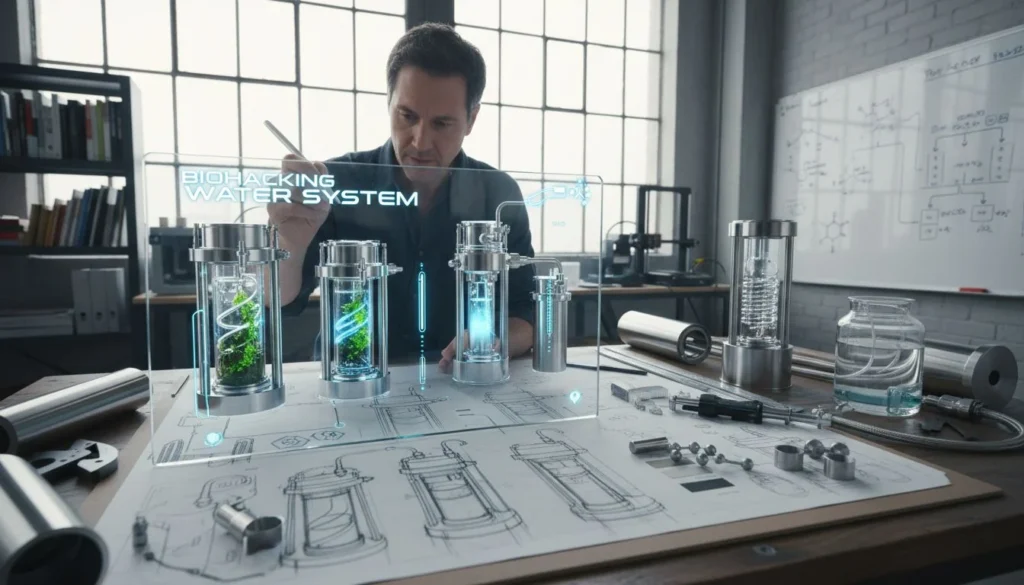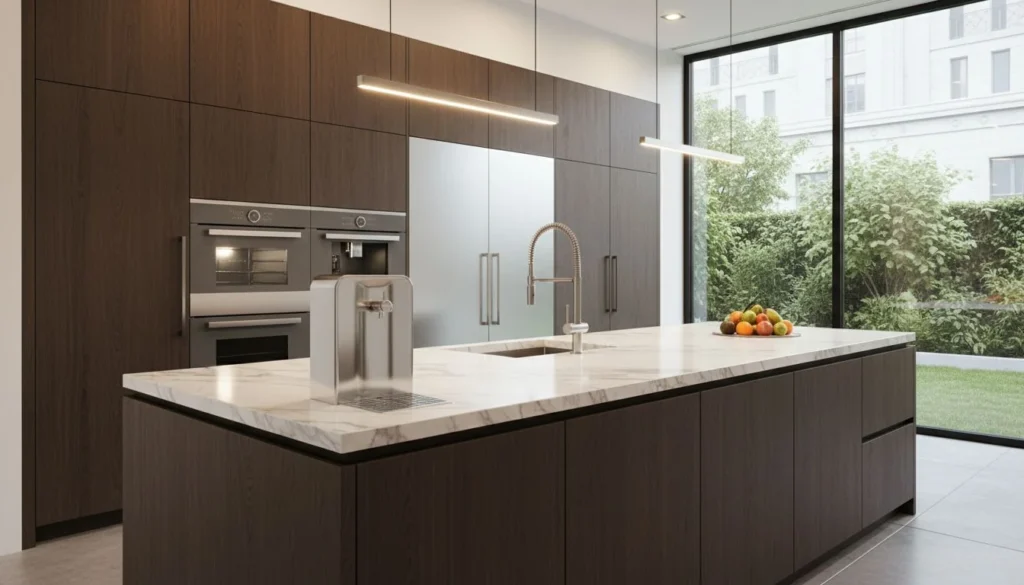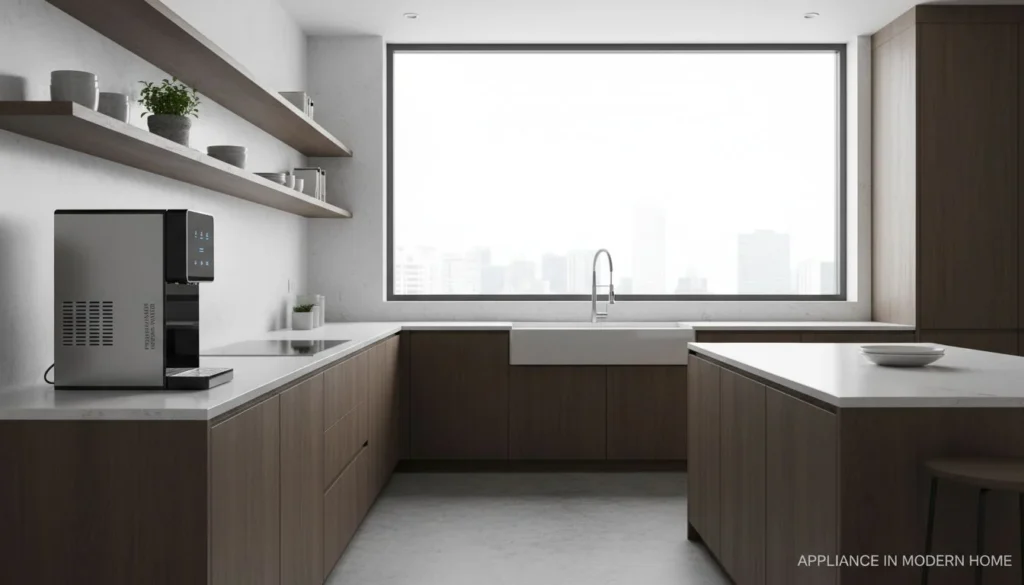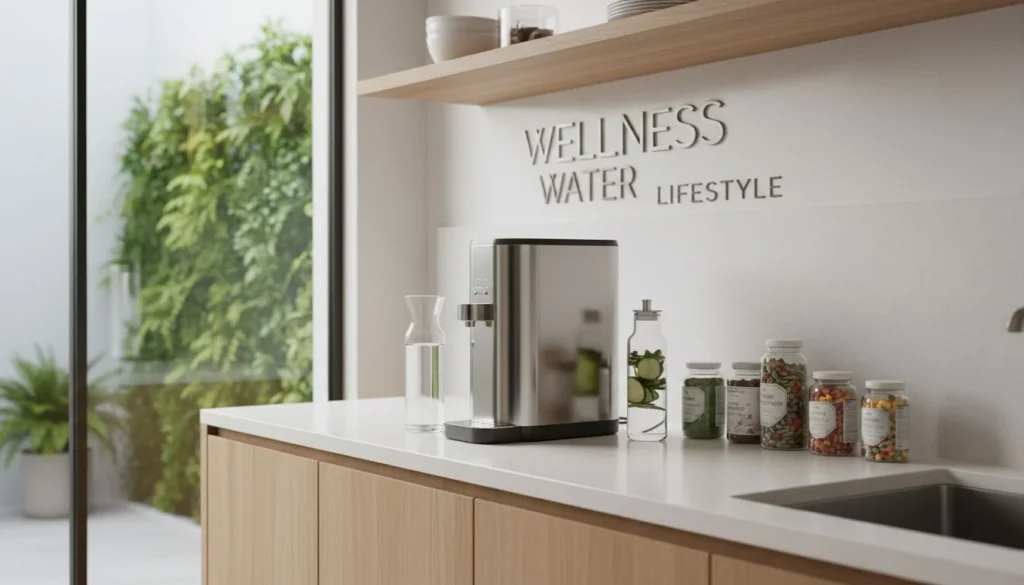As someone who has dedicated over two decades to the indoor air quality industry, I've witnessed firsthand how proper air management transforms living and working environments. Throughout my journey leading HisoAir's innovation across our manufacturing facilities in China, Vietnam, and Thailand, one question consistently emerges from our global B2B partners: "Should we invest in air purifiers, dehumidifiers, or both?"
The answer isn't always straightforward. While both devices contribute significantly to indoor comfort and health, they serve fundamentally different purposes that many professionals in the industry still confuse. This confusion often leads to suboptimal purchasing decisions and missed opportunities for creating truly healthy indoor environments.
Indoor air quality management has evolved dramatically in recent years, with technological advancements transforming simple appliances into sophisticated wellness systems. The global air purifier market is projected to reach USD 31.85 billion by 2033, growing at a CAGR of 6.80% from 2025-2033, while the dehumidifier market is expected to grow from USD 4.8 billion in 2024 to over USD 6.36 billion by 2032. These impressive figures reflect the increasing awareness of indoor air quality's impact on health and productivity.
In this comprehensive guide, I'll share my expertise on the distinct functions, benefits, and applications of air purifiers and dehumidifiers. More importantly, I'll introduce you to the next generation of indoor air quality solutions – integrated systems that combine the best of both technologies, like our innovative DM-A212 and DM-A216 models.
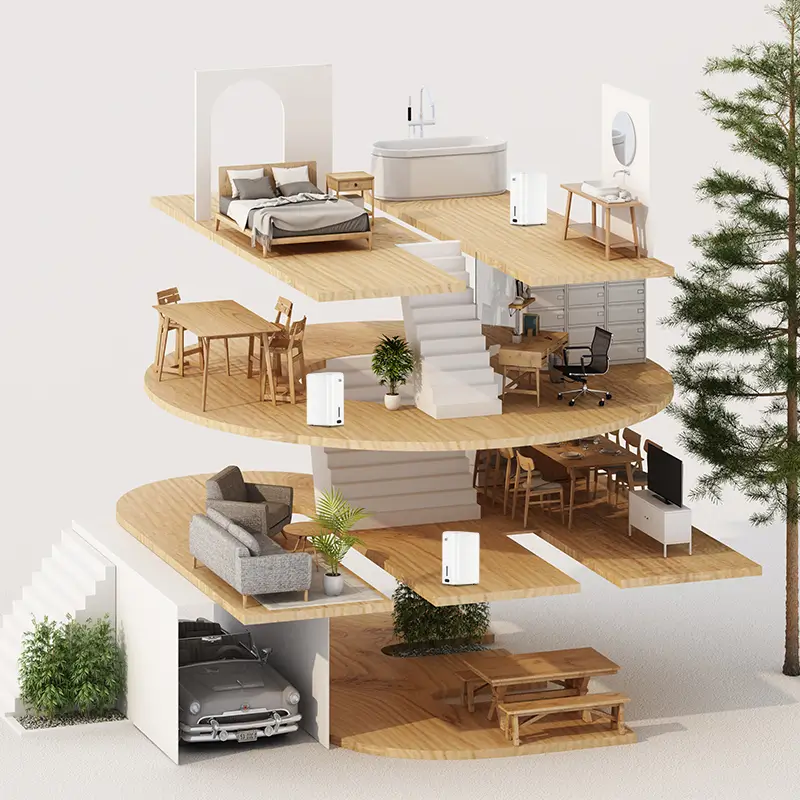
Whether you're a distributor seeking to expand your product line, a facility manager responsible for maintaining healthy commercial spaces, or an entrepreneur developing your own branded air quality solutions, this comparison will provide the insights you need to make informed decisions that truly benefit your customers and business.
Let's clear the air about these essential devices and discover how the right combination can transform indoor environments.
What Are the Fundamental Differences Between Air Purifiers and Dehumidifiers?
When consulting with our international clients, I often find that understanding the core differences between air purifiers and dehumidifiers is the first step toward making informed decisions about indoor air quality investments. Let me break down these differences in a way that highlights their unique contributions to creating healthier indoor environments.
Air Purifiers: Removing Contaminants for Cleaner Air
Air purifier technology works primarily by filtering out airborne particles and contaminants from your indoor environment. These devices draw in air from the room, pass it through a series of filters, and release cleaner air back into the space. The effectiveness of an air purifier largely depends on its filtration system and air circulation capacity.
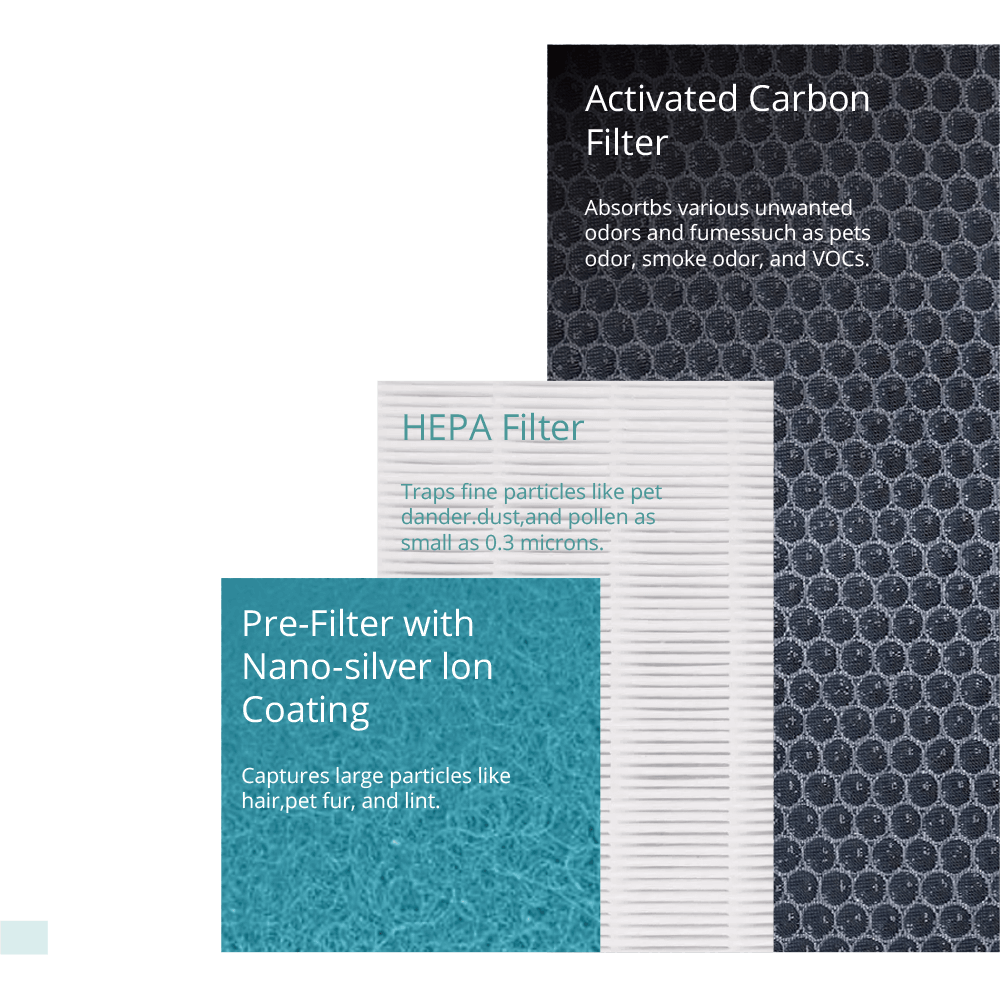
In our manufacturing facilities, we've perfected several filtration technologies:
-
HEPA filtration systems (High-Efficiency Particulate Air) capture 99.97% of particles as small as 0.3 microns, including dust, pollen, pet dander, and some bacteria.
-
Activated carbon filters absorb odors, smoke, and volatile organic compounds (VOCs).
-
UV-C light technology neutralizes microorganisms like bacteria and viruses by disrupting their DNA.
-
Ionizers release negatively charged ions that attach to positively charged particles, causing them to fall from the air.
The primary purpose of air purifiers is to remove pollutants that can trigger allergies, asthma, and other respiratory conditions. They're particularly valuable in environments where air quality is compromised by external pollution, indoor activities, or occupant sensitivities.
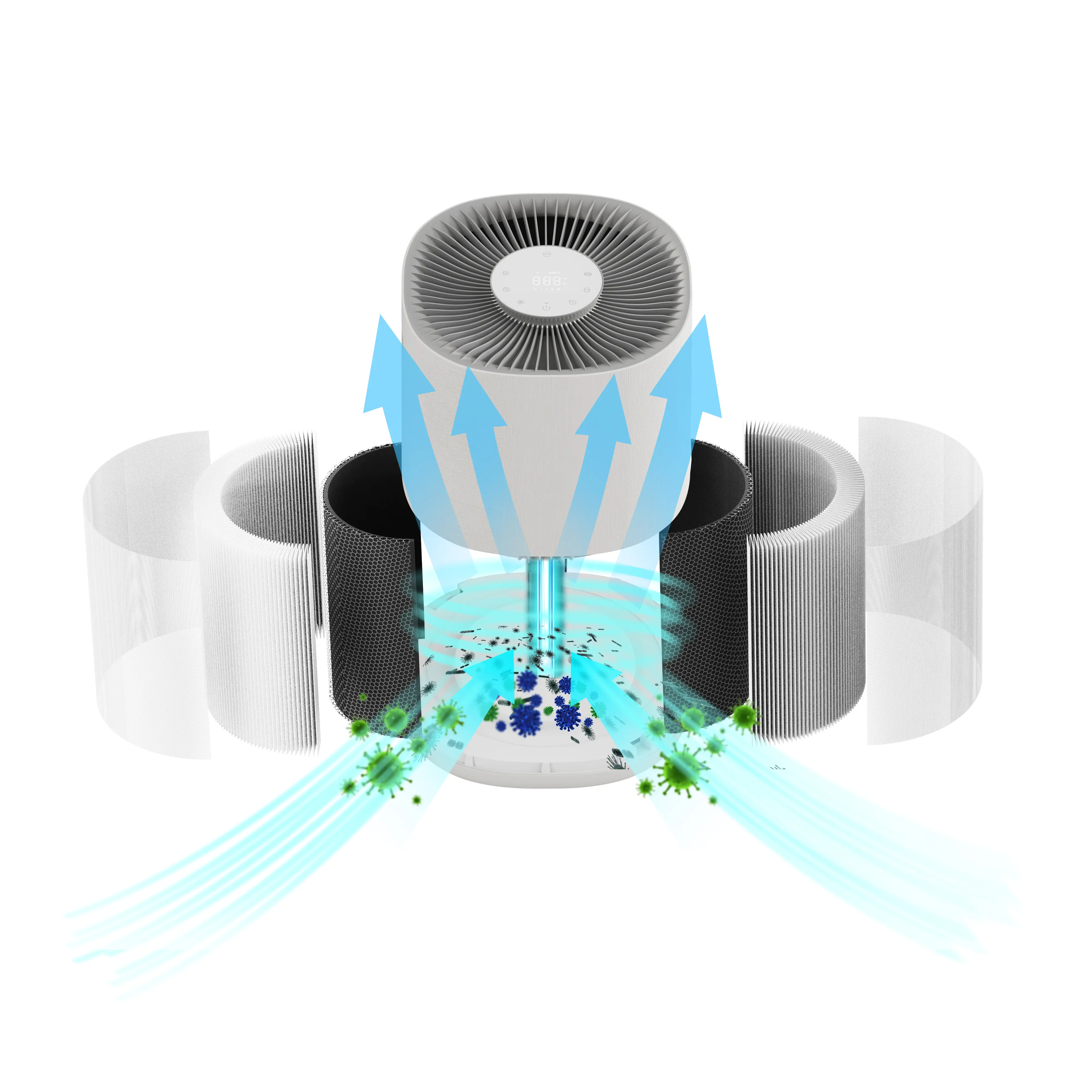
Dehumidifiers: Controlling Moisture for Comfort and Protection
Unlike air purifiers, dehumidifiers focus exclusively on reducing excess moisture in the air. They operate by drawing in humid air, cooling it to condense the moisture, collecting the water in a tank or through drainage, and releasing drier air back into the room.
Dehumidifier benefits extend beyond simple comfort. By maintaining optimal humidity levels (typically between 40-60%), these devices:
- Prevent mold and mildew growth, which requires moisture to thrive
- Reduce dust mite populations, as these allergens prefer humid environments
- Protect building materials and furnishings from moisture damage
- Eliminate musty odors associated with excess humidity
- Create less hospitable environments for certain pests that prefer moisture
In my experience working with clients across diverse climates, from the humidity of Southeast Asia to the seasonal moisture challenges in North America, proper humidity control is often overlooked despite being fundamental to both building preservation and occupant health.
Die wichtigsten Unterschiede auf einen Blick
| Merkmal | Luftreiniger | Luftentfeuchter |
|---|---|---|
| Primäre Funktion | Removes airborne particles and pollutants | Reduces excess moisture in the air |
| Ziele | Dust, pollen, pet dander, smoke, VOCs, bacteria, viruses | Humidity, moisture, dampness |
| Gesundheitliche Vorteile | Reduces allergens, improves respiratory conditions, removes irritants | Prevents mold growth, reduces dust mites, alleviates humidity-related discomfort |
| Ideal Conditions | Any indoor environment with air quality concerns | Spaces with relative humidity above 50-60% |
| Technology Used | HEPA filters, activated carbon, UV light, ionization | Refrigeration coils, desiccants, compressors |
| Wartung | Filter replacement, cleaning | Water tank emptying, coil cleaning |
| Energieverbrauch | Typically 50-100 watts | Generally 300-700 watts |
| Lärmpegel | 20-50 decibels | 25-50 decibels |
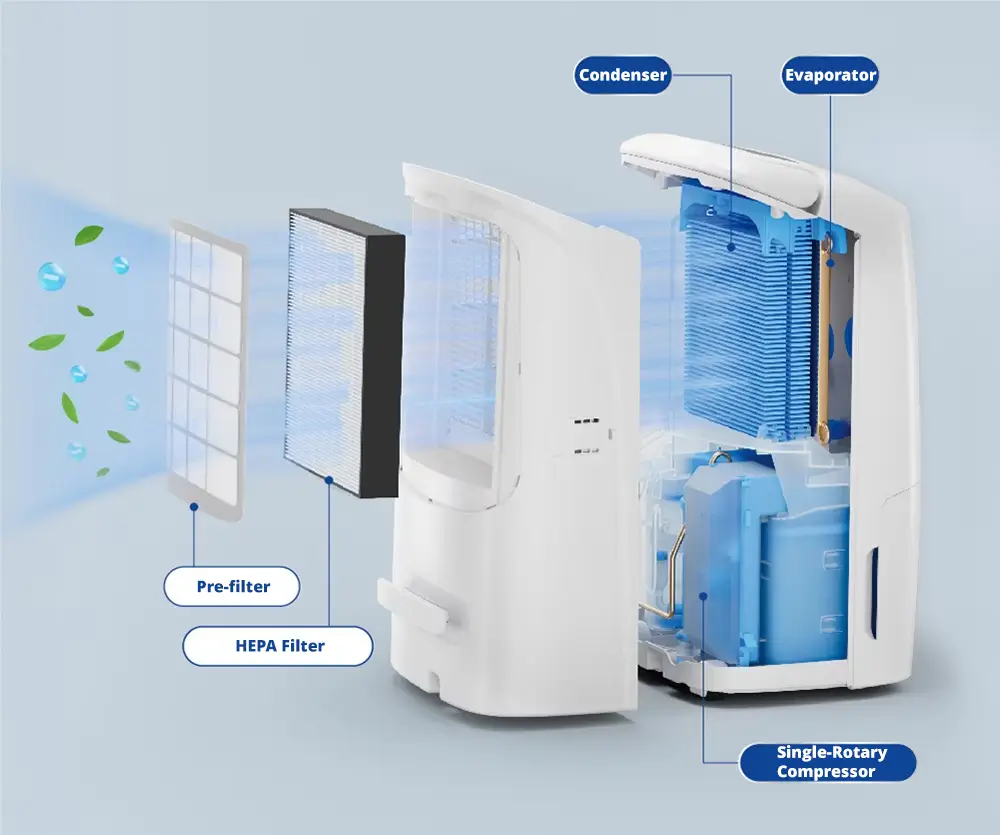
Understanding these fundamental differences is crucial for our B2B partners who need to make informed decisions about which solutions will best serve their customers' needs. While both devices contribute to healthier indoor environments, they address entirely different aspects of air quality management.
In the next section, I'll explore how these differences translate into specific health and environmental impacts, helping you understand when each device—or a combination of both—might be the optimal choice for your specific requirements.
How Do Air Purifiers and Dehumidifiers Impact Your Health and Living Environment?
Throughout my 20 years in the indoor air quality industry, I've observed firsthand how proper air management significantly impacts both physical health and overall wellbeing. The relationship between air quality and health is complex, with different devices addressing specific aspects of this crucial environmental factor.
Health Benefits of Air Purifiers: Beyond Basic Filtration
Air purifier technology has evolved dramatically since I began working with international clients. Modern purifiers don't just filter air—they transform indoor environments in ways that directly benefit human health:
-
Allergy and Asthma Relief: By removing airborne allergens like pollen, pet dander, and dust mites, air purifiers can significantly reduce allergy symptoms and asthma triggers. Our clients in the healthcare sector consistently report that properly filtered environments show measurable reductions in respiratory distress incidents.
-
Reduction of Airborne Diseases: High-quality HEPA filtration systems can capture many bacteria and viruses, potentially reducing the transmission of airborne illnesses. During recent global health challenges, we've seen increased demand for purifiers in commercial and healthcare settings specifically for this purpose.
-
Elimination of Harmful Chemicals: Volatile Organic Compounds (VOCs) emitted from paints, furnishings, and cleaning products can cause both short and long-term health issues. Advanced carbon filtration in modern purifiers effectively removes these invisible threats.
-
Improved Sleep Quality: Research indicates that cleaner air contributes to better sleep patterns. Many of our hospitality clients have integrated air purification systems into their premium accommodations specifically to enhance guest sleep experiences.
-
Reduced Stress on Respiratory Systems: By removing particulate matter, air purifiers reduce the burden on the respiratory system, allowing for easier breathing and potentially improving overall oxygen uptake.
The impact of these benefits extends beyond individual health to affect productivity in workplaces, recovery rates in healthcare settings, and comfort in residential environments. In my consultations with corporate clients, I often emphasize that indoor air quality management is not merely a health consideration but a significant factor in operational efficiency.
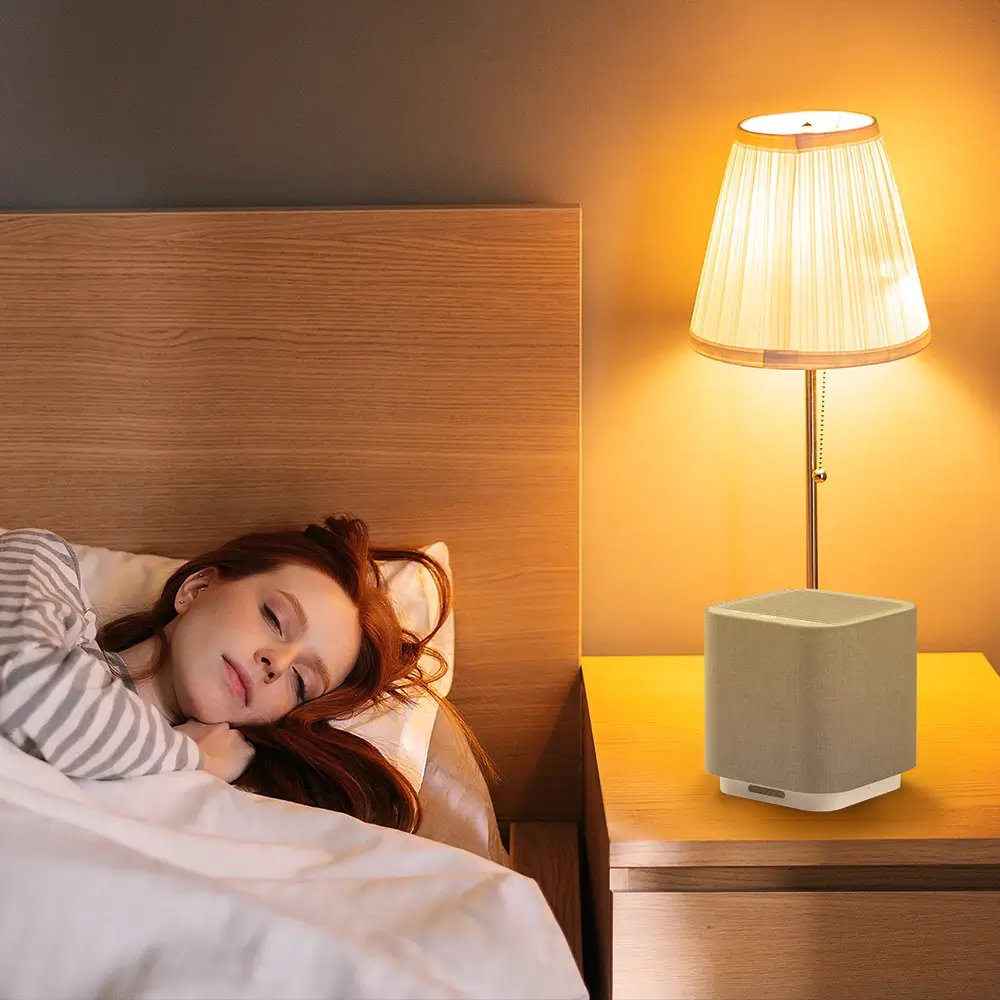
Health Benefits of Dehumidifiers: Controlling the Invisible Threat
While less obvious than air filtration, humidity control through dehumidification offers equally important health benefits:
-
Mold Prevention: Perhaps the most significant dehumidifier benefit is preventing mold growth. Mold spores require moisture to proliferate, and by maintaining humidity below 50%, dehumidifiers create environments where mold struggles to establish itself. This is particularly crucial for preventing respiratory issues, skin irritations, and allergic reactions associated with mold exposure.
-
Dust Mite Control: These microscopic allergens thrive in humid environments. By reducing moisture levels, dehumidifiers make spaces less hospitable to dust mites, potentially reducing associated allergic reactions.
-
Respiratory Comfort: Excessively humid air can feel heavy and difficult to breathe, particularly for individuals with pre-existing respiratory conditions. Optimal humidity levels (40-60%) create air that feels lighter and more comfortable to breathe.
-
Reduced Joint Pain: Some individuals with arthritis and similar conditions report that controlling humidity helps manage their symptoms, as extreme humidity can exacerbate joint discomfort.
-
Improved Skin Conditions: Excessive humidity can worsen certain skin conditions by promoting bacterial growth and preventing proper perspiration. Balanced humidity helps maintain skin health.
In my work with clients in tropical regions like Southeast Asia, proper dehumidification has proven transformative for both comfort and health outcomes. The difference between a space with uncontrolled humidity and one maintained at optimal levels is immediately perceptible, even to those without specific sensitivities.
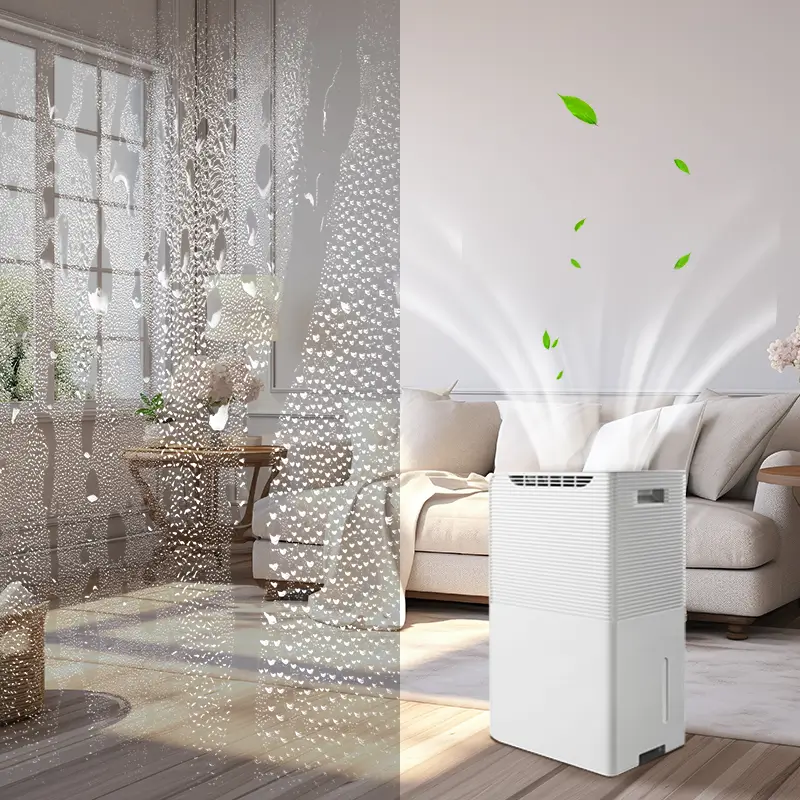
Environmental Impact: Protecting Spaces and Possessions
Beyond human health, both devices significantly impact the physical environment:
Air Purifiers:
- Reduce dust accumulation on surfaces
- Minimize odor penetration into fabrics and materials
- Prevent smoke and pollution particles from discoloring walls and furnishings
- Extend the lifespan of electronics by reducing dust infiltration
Dehumidifiers:
- Protect structural elements from moisture damage
- Prevent warping of wooden furniture and flooring
- Reduce condensation on windows and metal surfaces
- Protect books, documents, and artwork from moisture damage
- Prevent corrosion of metal components in equipment
The Synergistic Effect: When Both Technologies Work Together
In my experience developing comprehensive air quality monitoring solutions for clients across diverse industries, I've observed that the most effective approach often combines purification and dehumidification. When these technologies work in tandem, they create environments that are:
- Cleaner (through particle removal)
- Drier (through moisture control)
- Healthier (through combined reduction of allergens, irritants, and mold-supporting conditions)
- More comfortable (through optimized humidity and reduced irritants)
- Better preserved (through protection from both particulate contamination and moisture damage)
This synergistic effect explains why integrated solutions like our DM-A212 and DM-A216 models have gained such popularity among our B2B partners. They recognize that addressing only one aspect of air quality leaves significant gaps in overall indoor environmental management.
In the next section, I'll guide you through determining which solution—air purifier, dehumidifier, or a combined approach—best suits specific environmental challenges and business requirements.
When Should You Choose an Air Purifier vs. a Dehumidifier?
One of the most common questions I receive from our B2B partners is about choosing the right solution for specific environments. With limited budgets and space constraints, understanding when to deploy each technology—or when to invest in combined solutions—becomes a critical business decision.
Scenarios Where Air Purifiers Excel
Based on my experience working with clients across diverse industries and regions, air purifiers are typically the optimal choice in these scenarios:
-
Allergy and Asthma Management: When occupants suffer from respiratory conditions triggered by airborne particles, a high-quality air purifier with HEPA filtration system should be the priority. These devices effectively remove the microscopic irritants that can trigger symptoms.
-
High Pollution Areas: In urban environments or locations near industrial activities, air purifiers help mitigate the impact of external pollution that infiltrates indoor spaces. Our clients in major Asian and European cities often prioritize purification for this reason.
-
Smoke and Odor Concerns: Spaces affected by cooking odors, tobacco smoke, or persistent smells benefit tremendously from air purifiers with activated carbon filters. This includes restaurants, hotels, and residential buildings with shared ventilation systems.
-
Healthcare Settings: Medical facilities require exceptional air quality to prevent infection transmission and protect vulnerable patients. Advanced air purification is often non-negotiable in these environments.
-
Renovation and Construction: During and after construction or renovation projects, air purifiers help manage the significant increase in dust, VOCs from new materials, and other construction-related pollutants.
-
Normal Humidity Environments: In regions or seasons where humidity levels naturally stay within the optimal 40-60% range, air quality issues are more likely related to particulate matter than moisture.
Scenarios Where Dehumidifiers Are Essential
Conversely, dehumidifiers become the priority solution in these situations:
-
Visible Moisture Issues: When spaces show signs of condensation on windows, water stains on walls, or dampness in corners, energy-efficient dehumidification should be the first intervention.
-
High Humidity Regions: In tropical or coastal areas where relative humidity consistently exceeds 60%, dehumidifiers are essential for basic comfort and building protection. Many of our Southeast Asian clients consider dehumidification a baseline requirement.
-
Basement and Below-Grade Spaces: These areas typically suffer from higher moisture levels due to ground contact and limited ventilation. Dehumidifiers help prevent the musty odors and potential mold prevention issues common in these spaces.
-
Post-Flood Recovery: After water incidents, proper dehumidification is critical to prevent secondary damage and mold growth. The speed of moisture removal directly impacts the extent of long-term damage.
-
Storage Areas: Spaces housing sensitive materials like documents, artwork, electronics, or inventory often require careful humidity control to prevent moisture-related deterioration.
-
Seasonal Humidity Challenges: Some regions experience dramatic seasonal humidity fluctuations. Dehumidifiers may be essential during monsoon or rainy seasons but unnecessary during drier periods.
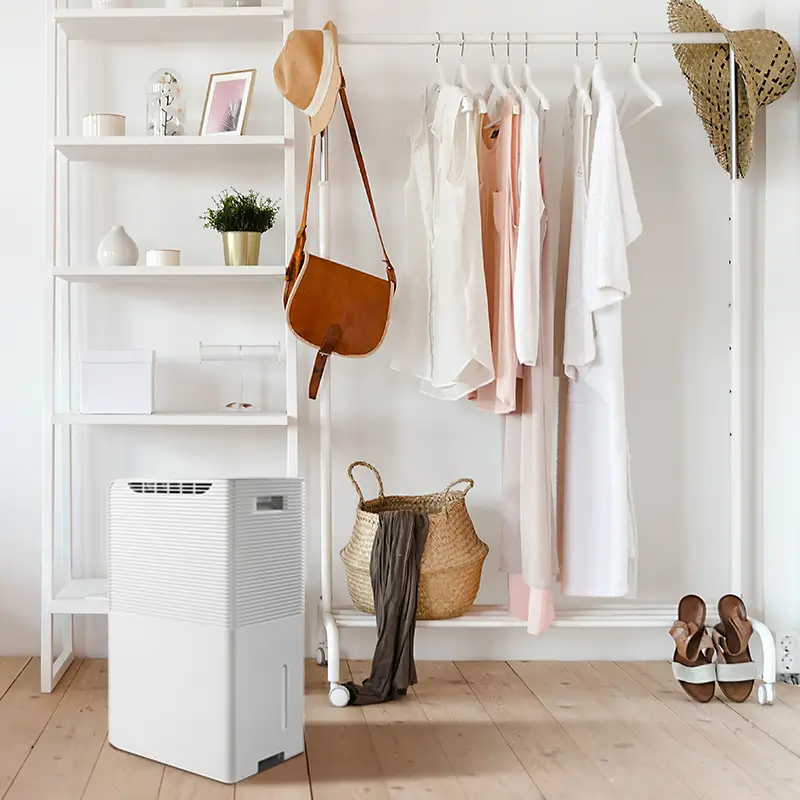
Decision Matrix: Choosing the Right Solution
To simplify the decision-making process for our partners, I've developed this practical decision matrix:
| Environmental Factor | Luftreiniger | Luftentfeuchter | Combined Solution |
|---|---|---|---|
| Visible dust and allergens | ✓✓✓ | ✗ | ✓✓✓ |
| Respiratory symptoms | ✓✓✓ | ✓ | ✓✓✓ |
| Visible condensation | ✗ | ✓✓✓ | ✓✓✓ |
| Musty odors | ✓ | ✓✓✓ | ✓✓✓ |
| Relative humidity >60% | ✗ | ✓✓✓ | ✓✓✓ |
| Mold concerns | ✓ | ✓✓✓ | ✓✓✓ |
| Asthma-Auslöser | ✓✓✓ | ✓ | ✓✓✓ |
| General air quality | ✓✓✓ | ✓ | ✓✓✓ |
| Building preservation | ✓ | ✓✓✓ | ✓✓✓ |
| Energy efficiency concerns | ✓✓ | ✓ | ✓✓ |
Key: ✓✓✓ (Highly Effective), ✓✓ (Moderately Effective), ✓ (Somewhat Effective), ✗ (Not Effective)
When Combined Solutions Make Business Sense
Through my work with commercial clients across multiple sectors, I've identified several scenarios where investing in air purifier dehumidifier combo units delivers the strongest return on investment:
-
Comprehensive Facility Management: For properties requiring consistent indoor air quality across multiple factors, combined solutions simplify management and maintenance while ensuring all aspects of air quality are addressed.
-
Space-Constrained Environments: When floor or wall space is limited, integrated units like our DM-A212 and DM-A216 models provide dual functionality without requiring separate footprints for multiple devices.
-
Humid Regions with Air Quality Challenges: Locations that face both high humidity and air pollution benefit tremendously from combined approaches. Many of our clients in developing industrial regions face precisely this combination of challenges.
-
Healthcare and Wellness Facilities: Spaces dedicated to health and recovery require comprehensive air quality management. Combined solutions ensure both particulate removal and optimal humidity for patient comfort and facility protection.
-
Premium Residential and Hospitality Settings: Where occupant experience is paramount, combined solutions deliver noticeable improvements in air comfort that justify the investment through enhanced customer satisfaction.
-
Efficiency-Focused Operations: For businesses prioritizing operational efficiency, managing a single device with dual functionality often proves more cost-effective than maintaining separate systems.
In my consultations with B2B clients, I emphasize that the choice between technologies should be driven by specific environmental challenges rather than general assumptions. Air quality monitoring data, when available, provides the most reliable foundation for these decisions, allowing for targeted solutions that address actual conditions rather than perceived issues.
The next section explores the cutting-edge innovations transforming both air purification and dehumidification technologies, helping you understand how recent advancements might influence your selection process.
What Are the Latest Innovations in Air Purifier and Dehumidifier Technology?
The indoor air quality industry has undergone remarkable transformation during my two decades at HisoAir. What began as relatively simple mechanical devices have evolved into sophisticated systems that leverage cutting-edge technologies. Understanding these innovations is crucial for B2B decision-makers looking to provide their customers with truly modern solutions.
Revolutionary Advancements in Air Purification
The evolution of air purifier technology has accelerated dramatically in recent years, driven by increasing awareness of air quality impacts and technological breakthroughs:
-
Advanced HEPA and Beyond: While traditional HEPA remains the gold standard for particle filtration, next-generation technologies are pushing boundaries. Medical-grade H13 and H14 HEPA filters now capture particles as small as 0.1 microns with 99.995% efficiency, addressing even the smallest viral particles and ultrafine pollution.
-
Molecular Filtration: Beyond particle capture, modern purifiers increasingly incorporate advanced molecular filtration using specialized media that target specific gaseous pollutants and VOCs. These targeted approaches allow for customized solutions based on specific environmental challenges.
-
Photocatalytic Oxidation: This technology uses UV light and catalyst materials to convert harmful pollutants into harmless substances. Unlike traditional filtration that simply traps contaminants, PCO technology actively breaks down pollutants at the molecular level.
-
Plasma and Bipolar Ionization: These technologies release charged ions that attach to airborne particles, making them larger and easier to filter or causing them to fall from the air. The latest generation addresses previous concerns about ozone production while maintaining effectiveness.
-
Smart Sensing and Adaptive Operation: Modern purifiers incorporate multiple sensor types—particle counters, VOC sensors, and even gas-specific detectors—that provide real-time air quality monitoring and adjust operation accordingly. This intelligence optimizes both performance and energy consumption.
-
Connectivity and Integration: Today's premium air purifiers connect to building management systems, smartphone apps, and other smart home ecosystems. This connectivity enables remote monitoring, scheduled operation, and integration with other environmental controls.
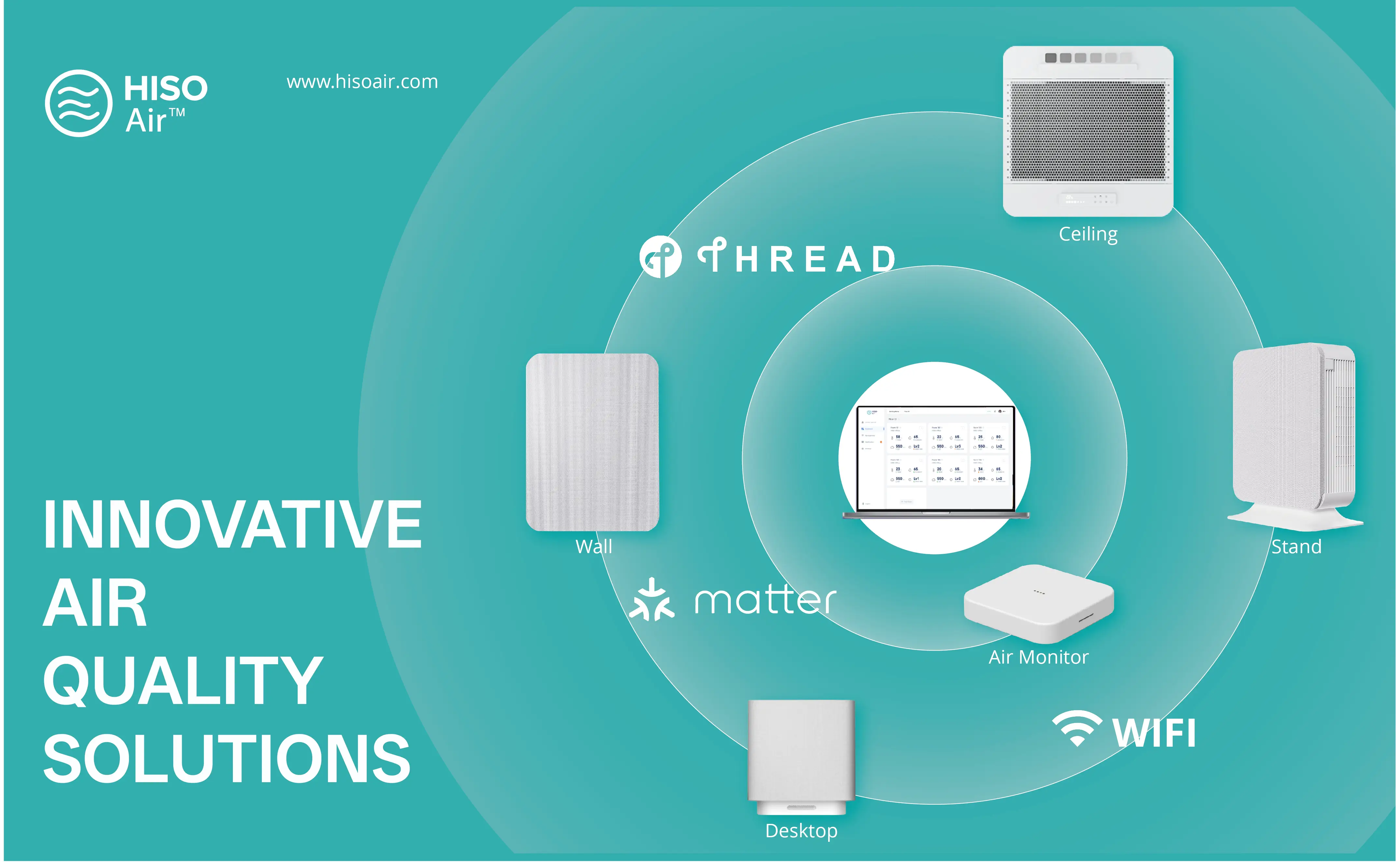
Transformative Developments in Dehumidification
Similarly, dehumidification technology has seen significant advancements that improve efficiency, effectiveness, and user experience:
-
Energy-Efficient Dehumidification: Modern compressor technology and improved heat exchange systems have dramatically reduced energy consumption. The latest models achieve energy-efficient dehumidification[6] that uses up to 40% less electricity than units from just a decade ago.
-
Desiccant Technology Improvements: While compressor-based systems remain common, advanced desiccant dehumidifiers have evolved to offer superior performance in low-temperature environments and provide more precise humidity control.
-
Smart Humidity Control: Precision hygrometers coupled with advanced algorithms enable modern dehumidifiers to maintain target humidity levels within ±2%, creating more stable environments for sensitive applications like art preservation or electronics manufacturing.
-
Self-Cleaning Technology: Innovative self-cleaning functions reduce maintenance requirements and prevent microbial growth within the units themselves. This advancement is particularly valuable in healthcare and food processing environments.
-
Noise Reduction Engineering: Through improved fan design, vibration isolation, and acoustic engineering, modern dehumidifiers operate at significantly lower noise levels—often below 45dB—making them suitable for noise-sensitive environments.
-
Water Management Innovations: Advanced water handling systems, including continuous drainage options, pump-assisted drainage for basement applications, and improved tank designs, have made water management more convenient and reliable.
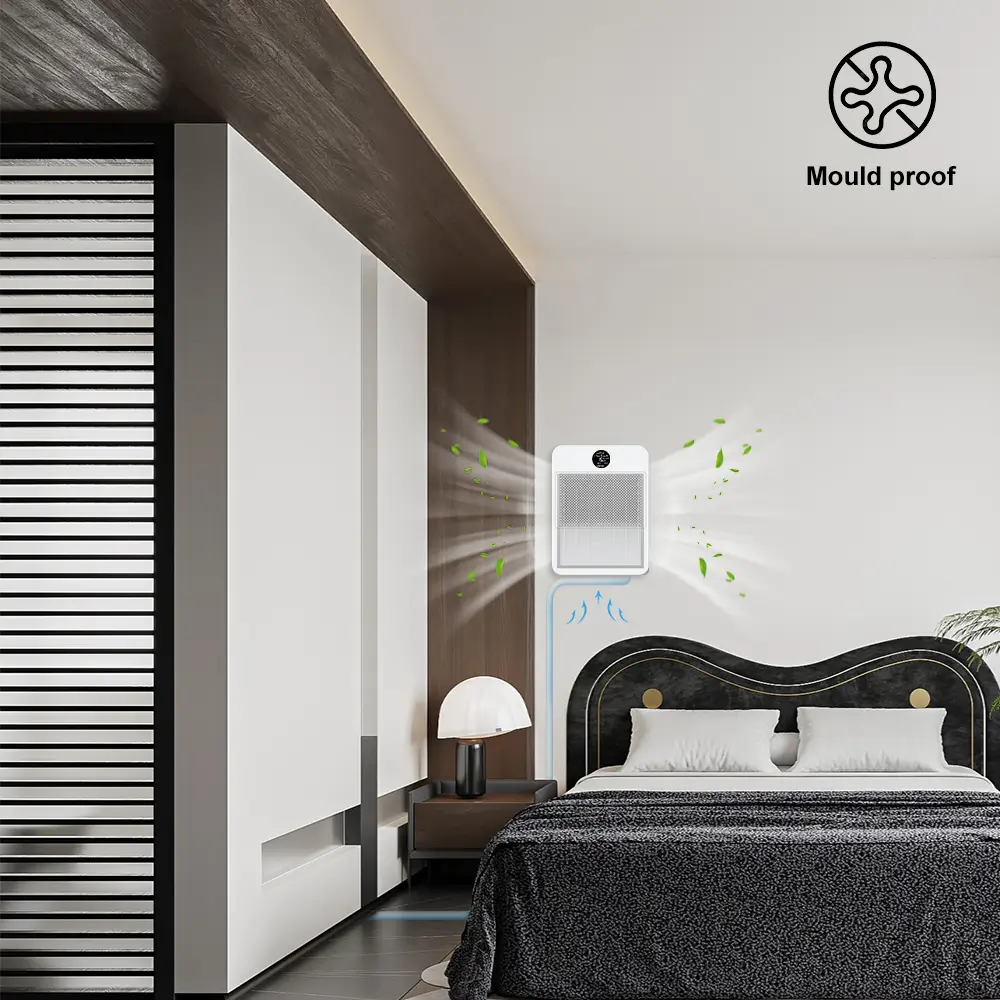
The Integration Revolution: Combined Systems
Perhaps the most significant innovation I've witnessed is the emergence of truly integrated systems that combine purification and dehumidification without compromising either function. These intelligent wellness systems represent a fundamental shift in approach:
-
Unified Control Systems: Rather than operating as two separate devices housed in one case, modern combined units feature unified control systems that coordinate functions for optimal performance and efficiency.
-
Shared Airflow Engineering: Advanced computational fluid dynamics has enabled the design of airflow paths that serve both purification and dehumidification functions without the inefficiencies of earlier combined units.
-
Complementary Filtration Stages: Modern combined systems position filtration elements strategically to protect dehumidification components while ensuring maximum air cleaning effectiveness.
-
AI-Driven Operation: Machine learning algorithms continuously optimize performance based on environmental conditions and usage patterns, balancing humidity control and air purification needs automatically.
-
Comprehensive Monitoring: Integrated sensor arrays track multiple air quality parameters simultaneously, providing a complete picture of indoor environmental conditions rather than isolated metrics.
Emerging Technologies Shaping the Future
As we look toward the next generation of air quality solutions, several emerging technologies show particular promise:
-
Matter Protocol Integration: The adoption of the Matter smart home standard is enabling unprecedented interoperability between air quality devices and broader home and building management systems. This universal connectivity standard will accelerate innovation by creating a more cohesive ecosystem.
-
Vorausschauende Wartung: AI-powered systems can now predict component failures and filter saturation before they impact performance, enabling proactive maintenance that minimizes downtime and ensures consistent air quality.
-
Personalized Air Quality Profiles: Advanced systems are beginning to offer customized operation based on occupant preferences, known sensitivities, and even health conditions, moving beyond one-size-fits-all approaches to air management.
-
Sustainable Materials and Design: The industry is increasingly embracing environmentally responsible manufacturing, with biodegradable filters, recyclable components, and energy-efficient designs becoming standard rather than premium options.
-
Miniaturization and Aesthetics: Technological advances are enabling more powerful air quality management in smaller, more visually appealing packages that integrate seamlessly into modern interior design.
These innovations collectively represent a fundamental transformation in how we approach indoor air quality. What were once simple appliances have evolved into sophisticated environmental management systems that actively contribute to health, comfort, and productivity.
In the next section, I'll introduce you to HisoAir's cutting-edge combined solutions that exemplify these technological advancements, demonstrating how our DM-A212 and DM-A216 models integrate the best of modern air purification and dehumidification technologies.
Wie können HisoAir's 2-in-1 Solutions Revolutionize Indoor Air Quality Management?
After exploring the fundamental differences, health impacts, and technological innovations in air purifiers and dehumidifiers, I'm excited to introduce you to HisoAir's revolutionary approach to indoor air quality management. Our 2-in-1 solutions represent the culmination of our 20+ years of industry expertise and our commitment to addressing the complete spectrum of air quality challenges.
The Evolution of Combined Solutions
Before diving into our specific models, it's important to understand why traditional approaches to combined air purification and dehumidification often fell short. Early attempts at integration typically sacrificed performance in one function to accommodate the other, resulting in compromised effectiveness.
At HisoAir, we recognized this fundamental design flaw and took a different approach. Rather than simply housing two separate systems in one case, we engineered our solutions from the ground up to leverage the synergies between purification and dehumidification. The result is a new generation of air purifier dehumidifier combo units that deliver exceptional performance in both functions without compromise.
Introducing the DM-A212: Compact Power for Medium Spaces
The DM-A212 represents our engineering team's achievement in creating a perfectly balanced solution for medium-sized environments up to 30m². This model exemplifies how thoughtful design can transform indoor air quality management:
Key Features and Benefits:
-
Powerful Dehumidification: The DM-A212 extracts up to 12 liters of moisture per day (at 27°C, 60% humidity), effectively addressing excess moisture that can lead to mold growth and structural damage. This capacity is ideal for maintaining optimal humidity levels in bedrooms, offices, and living spaces.
-
Flüsterleiser Betrieb: Operating at just 48dB, the DM-A212 provides powerful performance without disrupting concentration or sleep. This noise level is comparable to a quiet conversation, making it suitable for noise-sensitive environments like bedrooms and offices.
-
Intelligent Water Management: The 3.7L water tank with tank-full auto-off indicator prevents overflow while minimizing maintenance requirements. For extended operation, the optional continuous water drainage system eliminates the need for manual emptying.
-
Precision Humidity Control: With adjustable settings from 40% to 70% RH and an intuitive digital display showing real-time humidity levels, users can create precisely tailored environments for optimal comfort and protection.
-
Energy-Efficient Performance: Rated at just 194W, the DM-A212 delivers consistent performance while minimizing energy consumption, making it an economically sustainable solution for continuous operation.
-
Enhanced Mobility: The lightweight design with integrated handle and wheels enables easy repositioning to address changing needs or target specific problem areas.
-
Intelligente Konnektivität: Optional TUYA Wi-Fi control enables remote operation and monitoring, integrating seamlessly with broader building management systems and smart home ecosystems.
-
Comprehensive Air Management: Beyond basic functions, the DM-A212 features auto-swing airflow for wide coverage, auto-defrost to prevent ice buildup in cold conditions, and inner drying to prevent mold and maintain device hygiene.
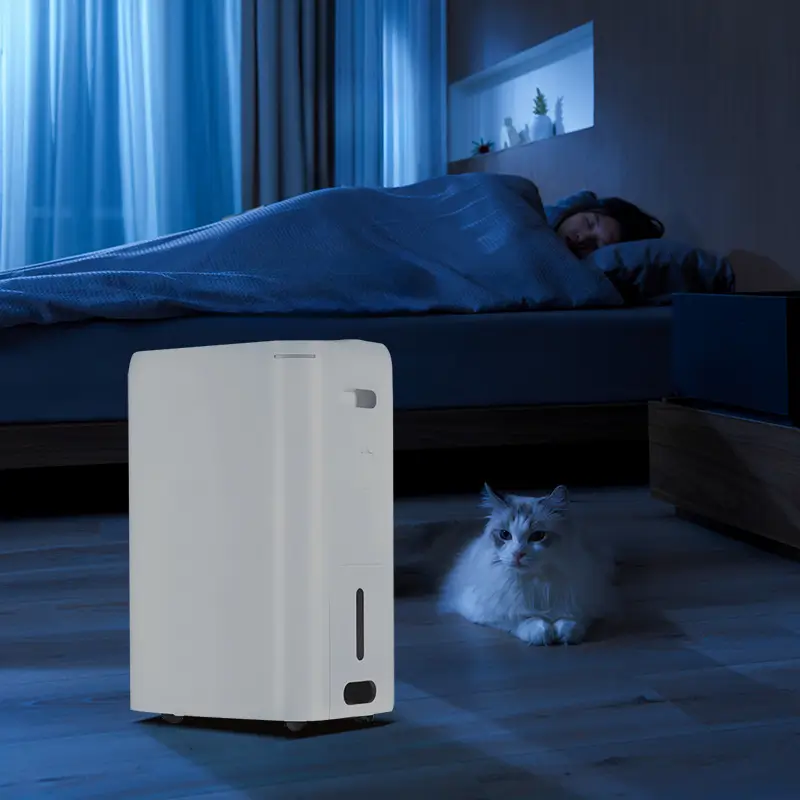
Die DM-A216: Industrial-Grade Performance for Larger Environments
For more demanding applications in larger spaces up to 50m², our DM-A216 model delivers exceptional capacity without sacrificing the refined user experience that characterizes all HisoAir products:
Key Features and Benefits:
-
High-Capacity Dehumidification: Extracting up to 16 liters of moisture per day (30°C, 80% RH), the DM-A216 effectively manages humidity in medium to large spaces, making it ideal for open-plan offices, retail environments, and spacious residential areas.
-
Award-Winning Design: Recognized with the 2018 Red Dot Design Award, the DM-A216 combines aesthetic appeal with functional excellence, reflecting our belief that performance and design should complement rather than compromise each other.
-
Substantial Water Management: The 5L water tank with overflow protection minimizes maintenance frequency, while the optional continuous drainage system enables truly hands-off operation in permanent installations.
-
Precise Environmental Control: With adjustable humidity levels from 40% to 80% RH and real-time monitoring via the digital display, the DM-A216 provides exceptional control granularity for specialized applications.
-
Balanced Acoustic Performance: Despite its industrial-grade capacity, the DM-A216 maintains noise levels below 50dB, ensuring it remains unobtrusive even in quiet professional environments.
-
Versatile Operation Modes: The unit features specialized modes for different scenarios, including a high-performance cloth drying mode that delivers 250 m³/h airflow, addressing specific needs beyond general dehumidification.
-
Comprehensive Monitoring: Integrated PM2.5 sensing provides additional air quality data, enabling more informed environmental management decisions.
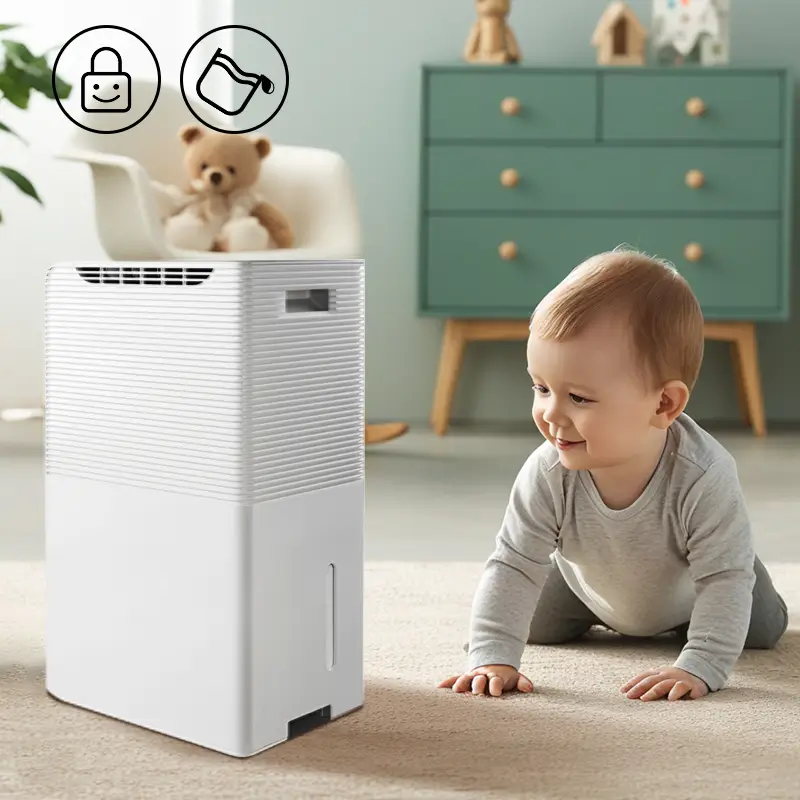
Comparative Analysis: Choosing the Right HisoAir Solution
To help our B2B partners select the optimal solution for their specific requirements, here's a detailed comparison of our flagship models:
| Merkmal | DM-A212 | DM-A216 |
|---|---|---|
| Daily Dehumidification Capacity | 12L (27°C, 60% RH) | 16L (30°C, 80% RH) |
| Empfohlene Raumgröße | Up to 30m² | Up to 50m² |
| Water Tank Capacity | 3.7L | 5L |
| Stromverbrauch | 194W | 240W |
| Lärmpegel | 48dB | <50dB |
| Humidity Control Range | 40-70% RH | 40-80% RH |
| Besondere Merkmale | Auto-defrost, Child Lock, Inner Dry | Cloth Drying Mode, Auto-Swing |
| Sensoren | PM 2,5-Sensor | PM2.5-Sensor |
| Konnektivität | Optional TUYA Wi-Fi | Optional TUYA Wi-Fi |
| Design Recognition | - | 2018 Red Dot Design Award |
| Ideal Applications | Bedrooms, Small Offices, Living Rooms | Open Offices, Retail Spaces, Large Living Areas |
The HisoAir Advantage: Beyond Specifications
While technical specifications provide a foundation for comparison, the true value of HisoAir solutions extends beyond numbers. Through my years working with clients across diverse industries and regions, I've identified several key advantages that distinguish our approach:
-
Integrated Engineering: Unlike competitors who simply combine existing components, our solutions are engineered as unified systems from the ground up, ensuring optimal performance in both purification and dehumidification functions.
-
Global Compliance: All HisoAir products meet or exceed relevant international standards, including CE, RoHS, and ETL certifications, simplifying deployment across global markets.
-
Anpassungsfähigkeiten: As an ODM/OEM manufacturer, we offer extensive customization options for B2B partners, from aesthetic modifications to functional adaptations that address specific market needs.
-
Comprehensive Testing: Every model undergoes rigorous testing by both our internal quality assurance team and independent laboratories like SGS, ensuring performance claims are verified and reliable.
-
Sustainable Design Philosophy: Our products incorporate energy-efficient dehumidification technologies and durable components that extend operational lifespan, reducing both energy consumption and electronic waste.
The combination of these advantages has made HisoAir a trusted partner for renowned global brands seeking reliable, high-performance indoor air quality solutions. Our manufacturing facilities in China, Vietnam, and Thailand enable us to maintain consistent quality while optimizing production costs and logistics for different target markets.
In the next section, I'll share insights from industry experts and customer experiences that demonstrate the real-world impact of combined air purifier and dehumidifier solutions in various applications.
What Do Industry Experts and Customers Say About Combined Air Purifier and Dehumidifier Solutions?
Throughout my career at HisoAir, I've had the privilege of collaborating with industry experts, health professionals, and B2B clients across diverse sectors. Their insights and experiences provide valuable perspective on the real-world impact of combined air purification and dehumidification solutions.
Expert Perspectives on Integrated Air Quality Management
The evolution toward integrated air quality solutions has been validated by numerous industry authorities. Dr. Zhang Wei, a leading researcher in environmental health at Beijing University, notes: "The separation of air purification and humidity control into distinct devices reflects outdated technological limitations rather than optimal approach. Modern intelligent wellness systems that address both aspects simultaneously represent a significant advancement in indoor environmental management."
This sentiment is echoed by Maria Rodriguez, Head of Facilities Management for a major European hotel chain, who explains: "We previously deployed separate purifiers and dehumidifiers throughout our properties, creating maintenance complexity and inconsistent results. Transitioning to integrated systems has simplified operations while delivering superior guest comfort metrics."
The healthcare sector has been particularly receptive to combined solutions. Dr. James Chen, Director of Environmental Services at a prominent Singapore hospital, reports: "In healthcare environments, comprehensive indoor air quality management is non-negotiable. Our implementation of combined purification and dehumidification systems has contributed to measurable reductions in hospital-acquired infections while simplifying our environmental control protocols."
Market Trends Supporting Integration
Recent market analysis supports this shift toward integration. According to Global Market Insights, the air purifier dehumidifier combo segment is projected to grow at a CAGR of 7.8% from 2026 to 2033, outpacing the growth of either standalone category. This accelerated adoption reflects both technological maturation and increasing recognition of the interconnected nature of air quality challenges.
Industry analyst reports highlight several factors driving this trend:
- Space optimization in increasingly dense urban environments
- Simplified maintenance and reduced operational complexity
- Enhanced effectiveness through coordinated operation
- Energy efficiency improvements through shared components
- Growing awareness of comprehensive indoor air quality management
These market dynamics align perfectly with what I've observed in our B2B partnerships across Asia, Europe, and North America. The demand for integrated solutions continues to accelerate, particularly in sectors where space utilization, operational efficiency, and health outcomes are prioritized.
Real-World Implementation Success Stories
The theoretical benefits of integration are compelling, but real-world results provide the most convincing evidence. Here are several implementation cases that demonstrate the practical impact of our combined solutions:
Healthcare Sector Implementation
A network of private clinics in Thailand deployed our DM-A216 units throughout their facilities, replacing separate purifiers and dehumidifiers. Their Director of Operations reports: "Beyond the obvious space and maintenance efficiencies, we've documented a 23% reduction in reported respiratory complaints among staff and a noticeable improvement in patient comfort ratings. The precision humidity control[10] has been particularly valuable during our monsoon season."
Hospitality Industry Application
A luxury hotel chain implemented our DM-A212 units in guest rooms across their Southeast Asian properties. Their Sustainability Director notes: "The guest experience improvements have been substantial, with room comfort ratings increasing by 18% year-over-year. Equally important, we've seen a 15% reduction in energy consumption compared to our previous separate systems, supporting our sustainability commitments."
Commercial Office Deployment
A major technology company equipped their offices in Vietnam with our integrated solutions. Their Facilities Manager reports: "Employee satisfaction with air quality increased by 27% after implementation, while maintenance calls related to air quality issues decreased by 65%. The smart humidity control features have been particularly valuable in maintaining optimal conditions despite dramatic seasonal variations."
Residential Developer Partnership
A premium residential developer in Canada now includes our units as standard features in their luxury developments. Their Director of Innovation explains: "The ability to offer comprehensive air quality management as a single, aesthetically pleasing solution has become a significant competitive advantage. Homebuyers increasingly recognize air quality as a health essential rather than a luxury option."
Customer Feedback Themes
Across diverse implementations, several consistent themes emerge in customer feedback:
-
Simplified Management: "Managing one integrated system is significantly more efficient than coordinating separate devices."
-
Consistent Performance: "The coordinated operation ensures that humidity control and purification work together rather than potentially counteracting each other."
-
Weltraum-Effizienz: "In space-constrained environments, the footprint reduction of combined units creates meaningful value."
-
Ästhetische Integration: "The design quality of HisoAir units allows them to complement rather than detract from carefully designed spaces."
-
Operational Savings: "Beyond the initial acquisition cost advantages, the ongoing operational efficiencies deliver substantial long-term value."
These testimonials and case studies reinforce what our engineering team has always believed: properly designed integrated solutions deliver superior results compared to separate systems, particularly in demanding applications where space, aesthetics, and performance all matter.
As one of our long-term partners in the medical equipment distribution sector recently told me, "The shift to integrated air quality management isn't just a trend—it's the new standard for environments where health and comfort are priorities." This perspective increasingly represents the consensus among forward-thinking facility managers and indoor environmental quality professionals.
In the concluding section, I'll summarize the key considerations for choosing between air purifiers, dehumidifiers, and combined solutions, helping you navigate this decision for your specific business requirements.
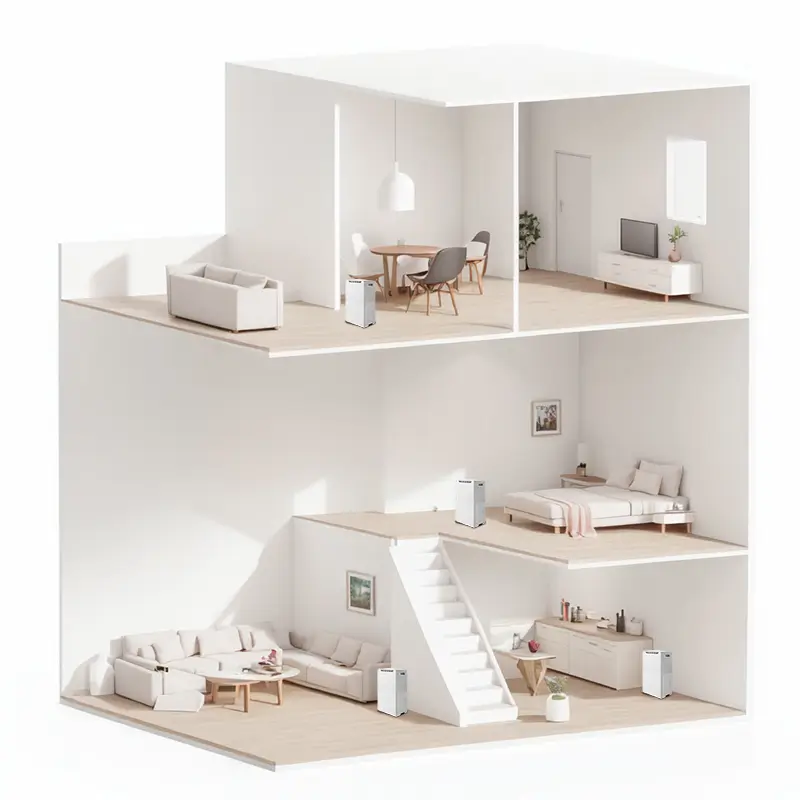
Schlussfolgerung
As we've explored throughout this comprehensive comparison, air purifiers and dehumidifiers serve distinct yet complementary roles in creating healthy indoor environments. While each technology addresses specific aspects of air quality, the integration of both functions represents the future of indoor environmental management.
From my two decades of experience in the air quality industry, I've witnessed the evolution from simple appliances to sophisticated intelligent wellness systems that actively contribute to health, comfort, and building preservation. This transformation reflects our deepening understanding of indoor air quality's impact on human wellbeing and operational efficiency.
The decision between air purifiers, dehumidifiers, or combined solutions should be guided by your specific environmental challenges, space constraints, and operational priorities. For environments facing both particulate contamination and moisture issues—which is increasingly common in many regions—integrated solutions like our DM-A212 and DM-A216 models offer compelling advantages in performance, efficiency, and management simplicity.
As global awareness of indoor air quality continues to grow, driven by health concerns, energy efficiency requirements, and wellness trends, the demand for comprehensive solutions will only increase. The market projections support this direction, with the combined air purifier and dehumidifier segment growing faster than either individual category.
At HisoAir, we remain committed to advancing the science and technology of indoor air quality management. Our manufacturing facilities in China, Vietnam, and Thailand continue to innovate, developing solutions that address the evolving needs of our global B2B partners. Whether you're equipping healthcare facilities, hospitality venues, commercial offices, or premium residential developments, our team is ready to support your specific requirements with customized air quality solutions.
I invite you to explore how our integrated approach to indoor air quality management can benefit your business and customers. The future of indoor air isn't just about removing particles or controlling moisture—it's about creating comprehensive environments that actively support health, comfort, and productivity through intelligent, efficient, and effective air management.
For more information about our products or to discuss your specific air quality challenges, please don't hesitate to contact our team. We look forward to helping you breathe easier.


